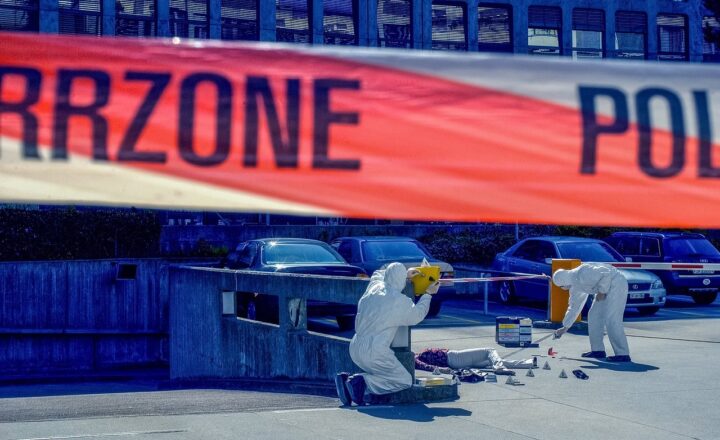Detective Tactics Straight Out of Hollywood That Actually Work
November 15, 2024

When we think about detectives, our minds often conjure images of hard-nosed, trench coat-wearing individuals cracking cases in the rain, thanks mostly to Hollywood films and television shows. These portrayals, while stylized and dramatic, are often grounded in real techniques used by sleuths across the globe. In this article, we will explore several detective tactics showcased in movies that are not only entertaining but also effective in real-life investigations.
1. Observation Skills: A Detective’s Best Friend
The ability to keenly observe one’s surroundings is a foundational skill in detective work, as seen in films like “Sherlock Holmes” and “The Girl with the Dragon Tattoo.” Detectives are trained to notice details that others overlook — from subtle changes in a crime scene to the body language of witnesses.
In practice, effective observation often involves:
- Focusing on minuscule details: A minor scratch on a wall could indicate a struggle, while a misplaced object may suggest a hasty retreat.
- Reading body language: Understanding facial expressions, posture, and gestures can provide insights into an individual’s truthfulness or emotional state.
Detectives use these keen senses to gather evidence and build a case, proving that the art of observation is vital both on-screen and off.
2. The Art of Interviewing
In movies like “Se7en” and “Law & Order,” detectives often engage in tense, strategic interviews with suspects and witnesses. The techniques they employ during these conversations can significantly impact the outcome of a case.
Here are some real-world techniques derived from these cinematic portrayals:
- Build rapport: Forming a connection with the interviewee can lead to a more cooperative attitude, making them more likely to open up and provide valuable information.
- Use open-ended questions: Asking questions that require more than a yes or no answer encourages individuals to share their stories in detail, revealing critical facts.
- Observe contradictions: Skilled detectives listen carefully for inconsistencies in the interviewee’s account, which may indicate deception or withholding of information.
The power of a well-executed interview can unravel the complexities of a case, showcasing an engaging detective tactic that resonates in real-life investigations.
3. Forensic Science: The Backbone of Modern Detecitves
Films like “CSI: Crime Scene Investigation” have brought forensic science to the forefront of detective work, highlighting its importance in solving crimes. Forensic techniques are evidence-based practices that are essential for any investigation.
Key forensic tactics used by real detectives include:
- DNA Analysis: Utilizing biological evidence to identify suspects, DNA matching has revolutionized forensic science and is often the key to locking in a perpetrator.
- Fingerprint Analysis: Collecting and analyzing fingerprints left at crime scenes offers a reliable way to connect suspects to their actions.
- Ballistics and Trace Evidence: Studying firearms, ammunition, and other trace materials helps establish links between suspects and crime scenes.
As seen in the movies, forensic science is often the ultimate detective tactic, bringing science and sleuthing together to solve cases with precision.
4. Psychological Profiling: The Mind of a Criminal
In films like “Mindhunter” and “Silence of the Lambs,” psychological profiling is portrayed as a mysterious tool that helps detectives understand the mental state of criminals. Profiling assists in predicting the behavior of suspects and provides insight into motives.
Real-world detectives utilize profiling techniques that include:
- Analyzing Behavioral Patterns: Understanding a criminal’s actions can provide clues about their personality type and likely future behavior, aiding in the formation of a suspect list.
- Crime Scene Analysis: Studying the arrangements and elements of crime scenes can reveal the mindset of the perpetrator, helping detectives to create a clearer picture of who they are searching for.
Psychological profiling blends psychology with detective work, giving investigators an edge in uncovering motives and narrowing down suspect lists.
5. The Use of Technology in Investigations
The prevalent use of technology in detective work is well-highlighted in shows like “Sherlock” and movies such as “Enemy of the State.” Today’s detectives leverage various technologies to gather information, track suspects, and analyze data efficiently.
Some technologies employed include:
- Surveillance Systems: CCTV cameras and drones allow detectives to capture real-time footage of suspects and crime scenes, providing irrefutable evidence.
- Mobile Forensics: Extracting data from smartphones can unveil call logs, messages, and location history, crucial for linking suspects to crimes.
- Data Analysis Tools: Algorithms and advanced software aid in analyzing vast amounts of information, helping detectives identify patterns and establish links that might not be immediately obvious.
Technology, as depicted in Hollywood, complements traditional detective legwork, giving professionals a powerful set of tools to solve crimes efficiently.
Conclusion
While many detective tactics seen on screen may be exaggerated for dramatic effect, they often find their roots in effective real-world methods employed by law enforcement. From astute observation skills and interviewing techniques to the utilization of forensic science and psychological profiling, detectives employ a vast toolbox to crack cases. The combination of these methods not only provides gripping storylines in Hollywood but also enforces the idea that detective work is both an art and a science. With the constantly evolving landscape of crime-solving, the strategies portrayed in films continue to inspire real-life detectives to adapt and innovate in their pursuit of justice.







